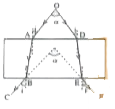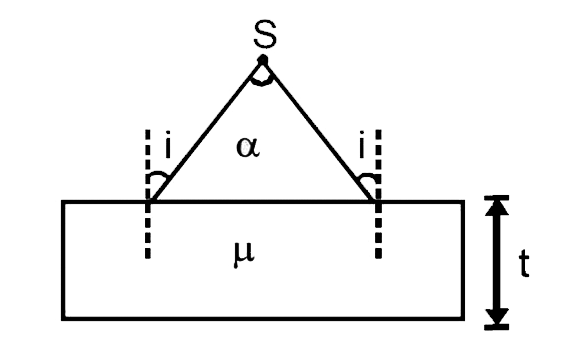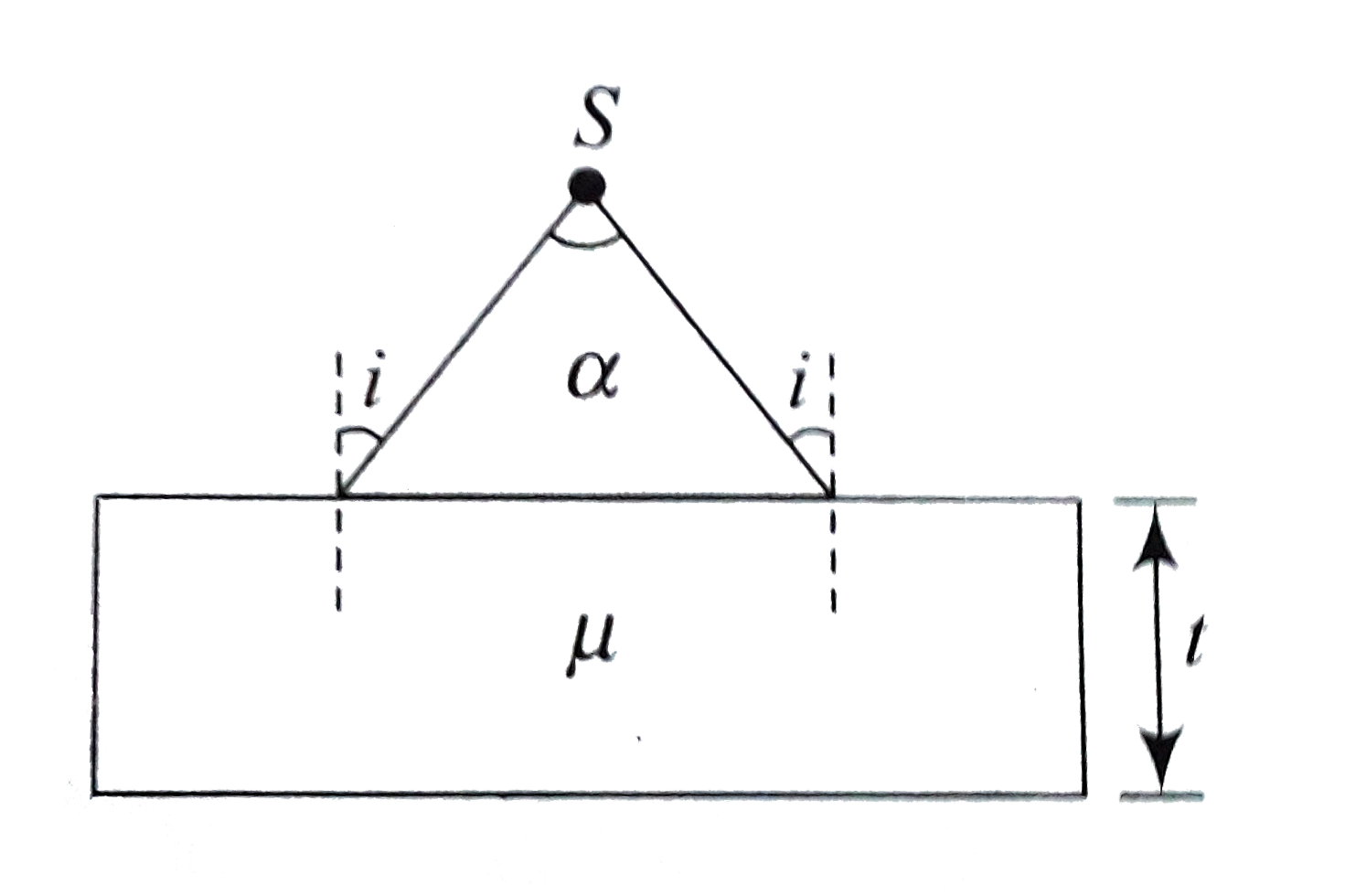A diverging beam of light from a point source S having divergence angle a falls symmetrically on a glass slab as shown. The angles of incidences of the two extreme rays are equal. IF the thickness of the glass slab is t and its refractive index is n, then the divergence angle of the emergent beam is

Divergence angle will remain unchanged because in case of a glass slab every emergent ray is parallel to the incident ray. However, the rays are displaced slightly towards outer side.
(In the figure

Topper's Solved these Questions
- BOOK - AAKASH SERIESCHAPTER - RAY OPTICS EXERCISE - EXERCISE I95videos
RAY OPTICS
- BOOK - AAKASH SERIESCHAPTER - RAY OPTICS EXERCISE - EXERCISE 1B45videos
RAY OPTICS
- BOOK - AAKASH SERIESCHAPTER - PHYSICAL WORLDEXERCISE - VERY SHORT ANSWER TYPE QUESTIONS5videos
PHYSICAL WORLD
- BOOK - AAKASH SERIESCHAPTER - RIVISION EXERCISEEXERCISE - MOTION IN A PLANE (LAMNI.S THEOREM)6videos
RIVISION EXERCISE
Similar Questions

A diverging beam of light from a point source S having devergence angle α, falls symmetrically on a glass slab as shown. The angles of incidence of the two extreme rays are equal. If the thickness of the glass slab is t and the refractive index n, then the divergence angle of the emergent beam isView SolutionIf the angle of incidence and angle of emergence of a light ray falling on a glass slab are I and e respectively, prove that,i=e.
View Solution
Knowledge Check
- Question 1 - Select One
A diverging beam of light from a point source S having divergence angle α, falls symmetrically on a glass slab as shown. The angles of incidence of the two extrem rays are equal. If the thickness of the glass slab is t and the refractive index n, then the divergence angle of the emergent beam is
 AzeroBαCsin−1(1n)D2sin−1(1n)
AzeroBαCsin−1(1n)D2sin−1(1n) - Question 2 - Select One

A diverging beam of light from a point source S having devergence angle α, falls symmetrically on a glass slab as shown. The angles of incidence of the two extreme rays are equal. If the thickness of the glass slab is t and the refractive index n, then the divergence angle of the emergent beam isAzeroBαCsin−1(1n)D2sin−1(1n) - Question 3 - Select One
The angle between the incident and the emergent ray from a glass slab is
A90∘B0∘Cless than 90∘Dmore than 90∘
If the angle of incidence and angle of emergence of a light ray falling on a glass slab are i and e respectively, prove that, i = e.
View SolutionA parallel beam of monochromatic light is incident on a glass slab at an angle of incidence 60∘. Find the ratio of width of the beam in the glass to that in the air if refractive index of glass is 3/2.
View SolutionAt what angle of incidence should a light beam strike a light beam strike a glass slab of refractive index √3, such that the reflected and refracted rays are perpendicular to each other ?
View SolutionA circular beam of light of diameter (width) falls on a plane surface of glass. The angle of incidence is .I., angle of refraction is .r. and refractive index of glass is μ. Then the diameter of the refracted beam d. is…….
View SolutionA paralel beam of monochromatic light is incident on a glass slab at an angle of incidentce 45∘. Find the ratio of width of beam in glass to that in air ( If refractive index of glass is 1.5).
View Solution

